
Today’s review camera is the Ricoh FF-3D AF Super; did you instantly guess it’s from the 1980s? It has that quintessential 1980s point and shoot 35mm camera look, especially with a silver finish and Pontiac dashboard inspired rear LCD panel.
Although the Ricoh FF-3D AF Super is a rather typical fully automatic point and shoot camera of the day, there are a couple of nice features to point out; such as the very bright flash, a manual ISO dial, (which doubles as an exposure compensation option), and a super sharp five element lens.
For a higher end mid 1980s fixed lens camera, it has a couple of annoying quirks; it uses an ‘electronic sound’ to warn you that you’re out of exposures, but it won’t automatically rewind at the end of the roll; so if you use a 24 roll like I did, and miss the ‘sound at the end,’ it’ll let you keep on shooting until you hit 36, then signal again, and you better hope you hear it this time; I didn’t, and ended up taking about 40 shots before I realized something was amiss. A flashing green indicator on top tells you if film is still passing by the gate, but you can’t see it while shooting.
So what does the Ricoh have to offer, and how does it perform? find out below!
Name; Ricoh FF-3D AF Super.
Box contents; camera, owner’s manual, a wrist/neck strap and maybe a vinyl carrying case.
Manufactured by; Ricoh Company LTD, Tokyo, Japan.
Made in: Japan.
Date of manufacture; ca1984.
Price; original MSRP from Ricoh 47,800 yen. Street price in the USA probably around $299 or less. Current ebay prices are around $50-$90 for a good used copy. The silver colored copy reviewed here is a little more money.
Build material; mostly plastic body.
Weight; camera with batteries, 12.8oz (364g).
Dimensions; Size is 5.2″ (132mm) wide, 2.7″ (69mm) high, and 1.85″ (47mm) deep.
Focal length; 35mm.
Aperture; F/3.2-16, not user adjustable.
Focusing; auto focus, 3.3′ (1m) to infinity. Half press to lock AF. Manual states the AF uses eight different focusing zones to ‘insure maximum sharpness.’
Original print size; standard over-sized prints 4 x 6.″
Approximate resolution; will make excellent 8″x 10″ and larger prints.
Lens; Rikenon 35mm F/3.2 multi-coated glass five elements in five groups design. Angle of view 63° Online information directly from Ricoh says the lens design is five elements in four groups, but the owner’s manual says 5/5.
Shutter and speed; 1/6s to 1/500s but not user adjustable. No cable release option.
Distortion; complex wave type; but only noticeable when straight lines are near the edges. See image below.
Color fringing; none noticeable.
Double exposure prevention; yes, but cannot be over-ridden.
Features; 10 second timer, flash on-off settings, adjustable ASA/ISO so this is also an exposure compensation dial.
Film; all 135 film cartridges, B&H, Amazon, eBay.
Flash. built-in, distance coupled flash exposure control, GN 12m at ISO 100, 7 second recharge time with fresh lithium batteries.
Power; 2 AA batteries for main power, and a CR2025 for the data back. AA battery check function.
Viewfinder; albada type bright frame; 0.46x magnification with a field of view of 84%. field of view frame with parallax correction marks; auto focus frame, focus zone marks, and camera shake warning signal. Red focus indicators are: head and shoulders symbol, from 3.3′ to 6′ (1-2m), two persons symbol from 4.5-19′ (1.5-5m), and the mountain range symbol for distances of 8′ to ∞ (2.5-∞). There is overlap between symbols, so you may get a different symbol for subjects that are the same distance away.
DX coding; none, but manually adjustable at ISO 25, 64, 100, 200, 400 and 1000.
Accessories for this model; dumb plastic belt clip holder; a close-up (12″ or .3m), and telephoto lens (1.25x or 44mm) converter set with case for $60, and a carrying case for about $15.
Crippling features and omissions; poor close focusing from inside 10′ (3m).
Good features; very simple to operate, excellent exposures, very sharp lens, mostly accurate AF at longer distances, and a decent flash.
Other models; black, red or silver metallic body colors, standard back or quartz date. Nearly identical to the FF-3 AF and FF-3D AF models. The name ‘Super’ was used when Ricoh produced red and silver colored cameras and a change to the ISO/ASA dial (added ISO 200) a year or two after the initial offerings.
Go here for an owner’s manual, and be sure and tip the site owner.
Product shots with descriptions. Click for larger images.
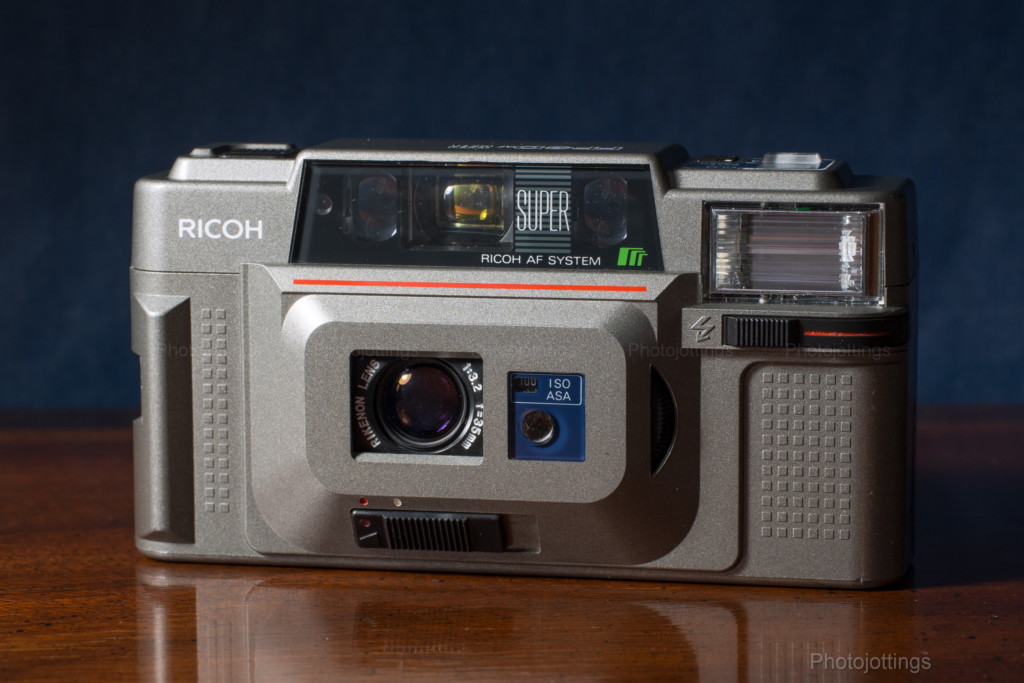
The power turns on automatically when the lens cover switch slides to the users right. The three windows above the lens are as follows; in the center is the viewfinder, the smaller windows to the left and right are used for distance measuring, and the little round window is the self timer indicator that flashes red when activated. The circular window to the right of the lens is the metering cell, and the ISO/ASA indicator is just above that. The black dial to set the ISO/ASA is to the right in the shadow.
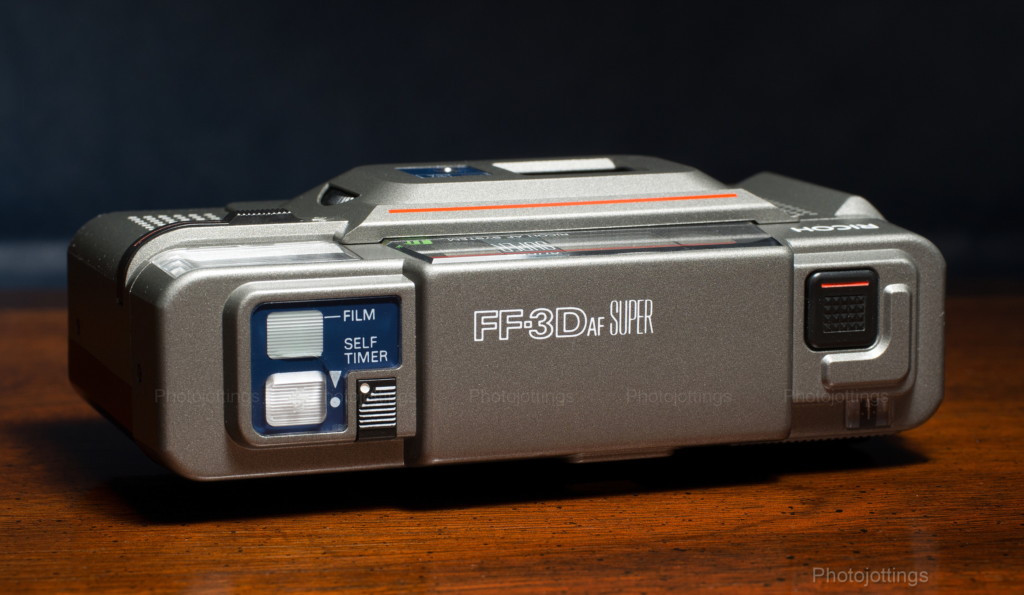
The top left square is the film winding/rewinding indicator, it blinks green when film is passing by the gate. The lower square is the orange flash ready lamp. The rectangular black switch is for activating the 10 second self timer. Over to the right is the shutter button, (which has a finger guard) and has a deep and gentle pull. Below the shutter, and not too visible here is the additive type shot counter window.
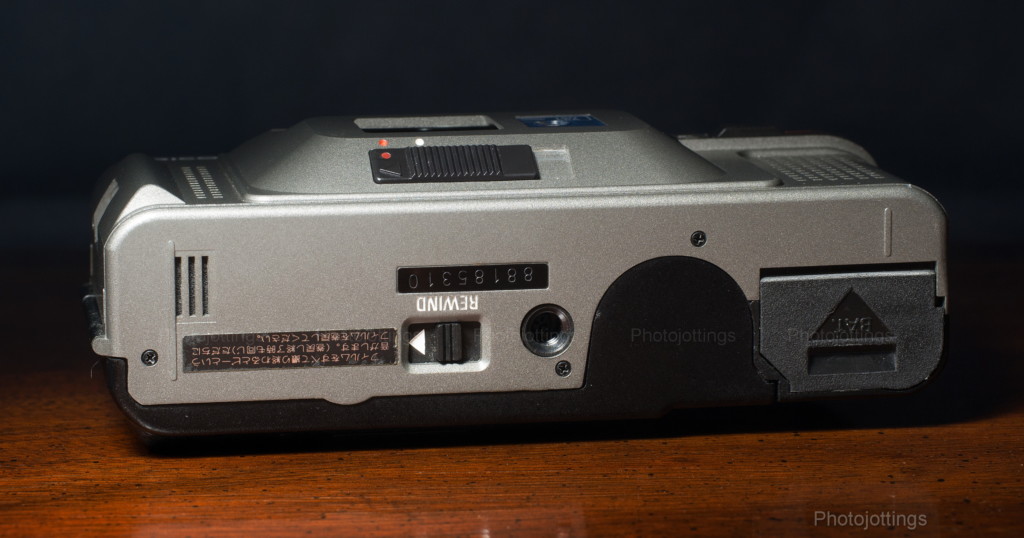
Not much to see in the bottom view except the AA battery compartment, rewind button and tripod socket. The grill on the left must be for the audible signal.
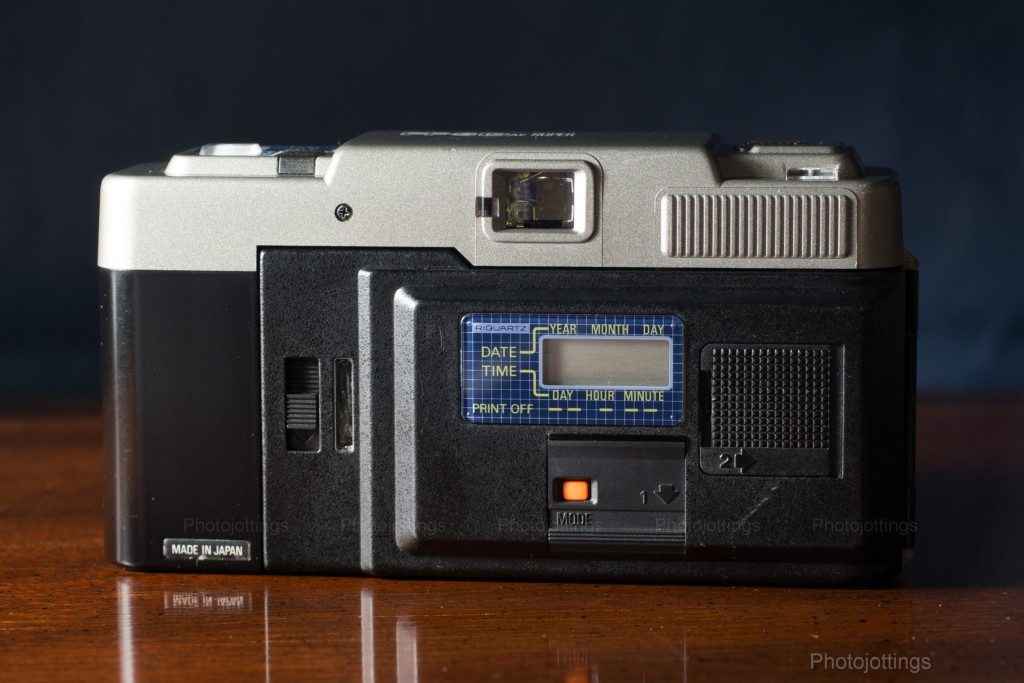
This model has the RIQUARTZ Date back, and can be set to the correct date using the tiny recessed buttons; or not. The data back uses a CR2025 3V coin battery that’s located outside the back cover. In a pinch you can use a CR2032 3V, however, the battery door is hard to keep locked shut.
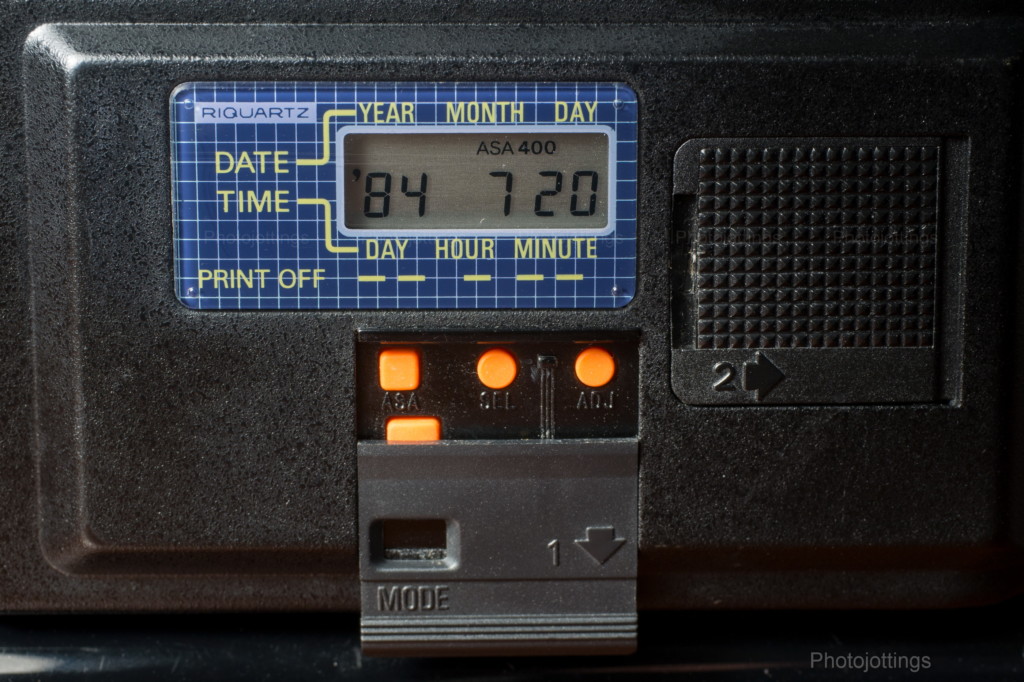
A close-up of the date back shows the adjustment buttons after sliding down the little door. The date goes to ’09-12-31. You can set the time, and the ASA to either 100 or 400. You can turn off printing if desired.

Nothing special really inside the camera. Normal items are a spring steel film tensioner, and pressure plate. My model has some issues with the moltoprene seals on the back cover.
Here are some boring test images scanned on a Nikon Super Coolscan 9000 ED. All are 4000 pixels wide; there is no additional resolution from scanning at a higher sample rate. Kodak Gold 200 and Kodak Portra 400 used for all shots. Click for larger images.
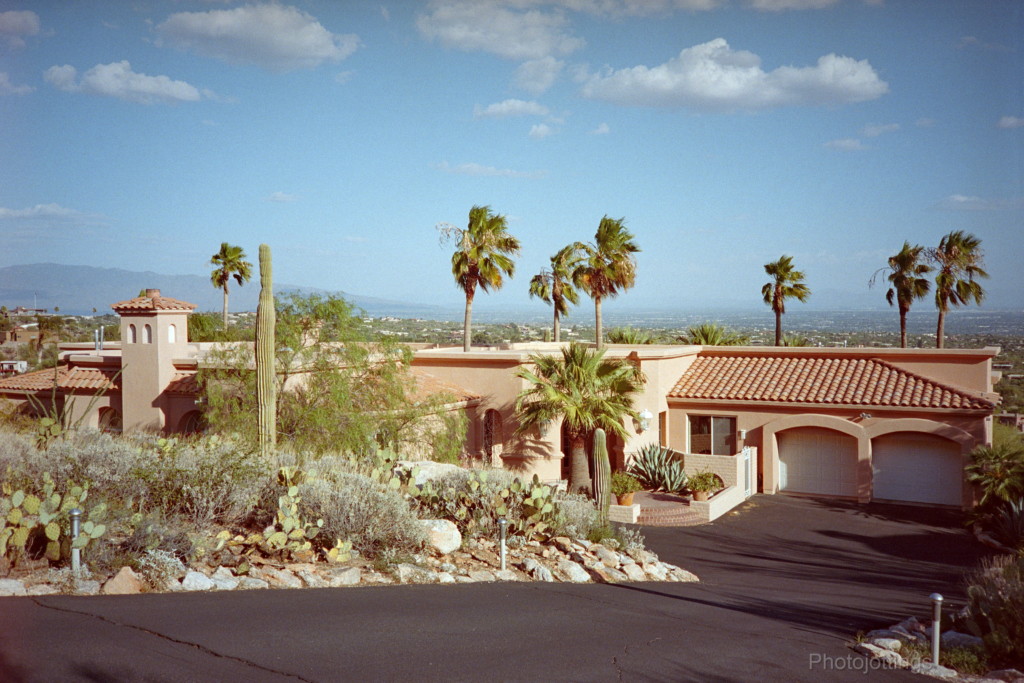
Palms, saguaros and asphalt.
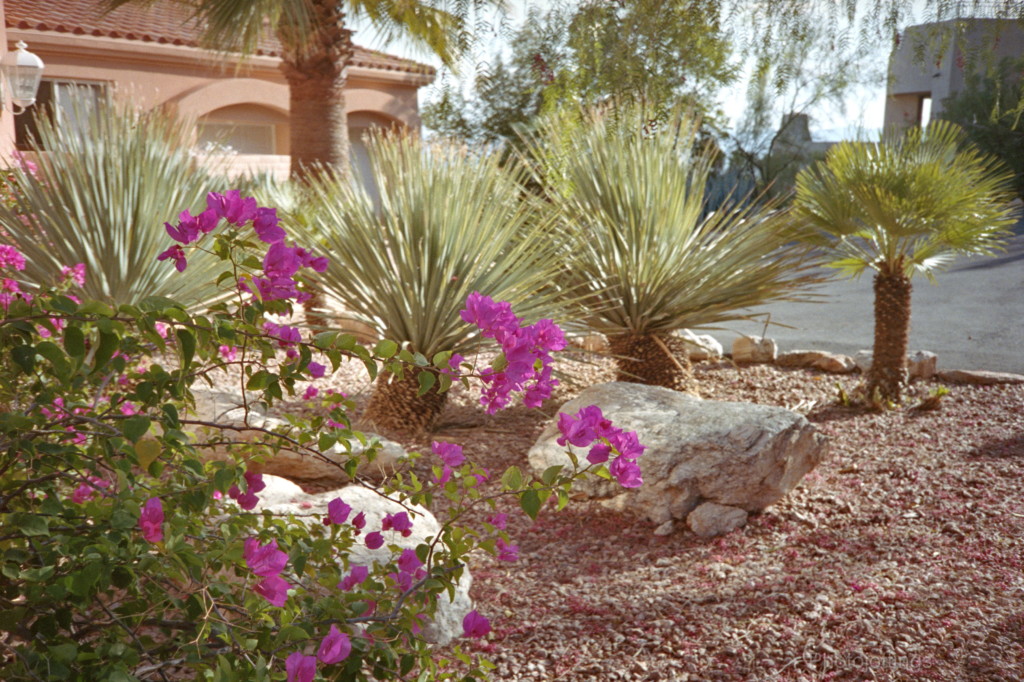
Close focus on Bougainvillea bracts in center; around 3′ or 1m. Probably close to a wide open aperture based on the background blur.
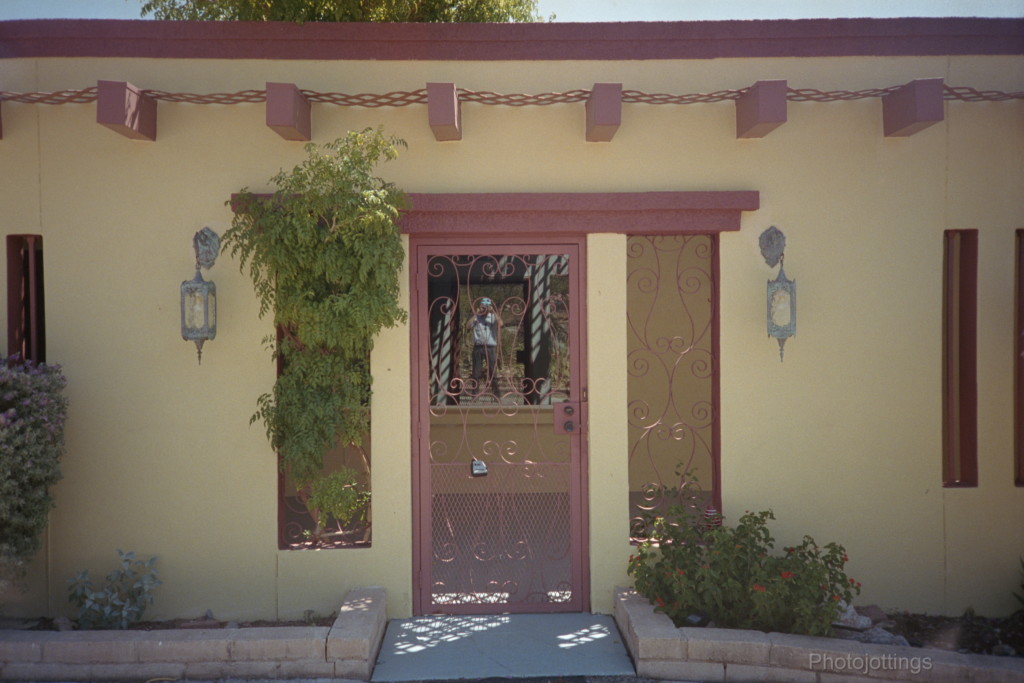
Complex wavy lens distortion along the roof line is not very noticeable unless straight lines are near the edges like this. Notice stranger lurking in the background.

Shed outline is where the viewfinder guide lines are, and outside of this is what you actually get.
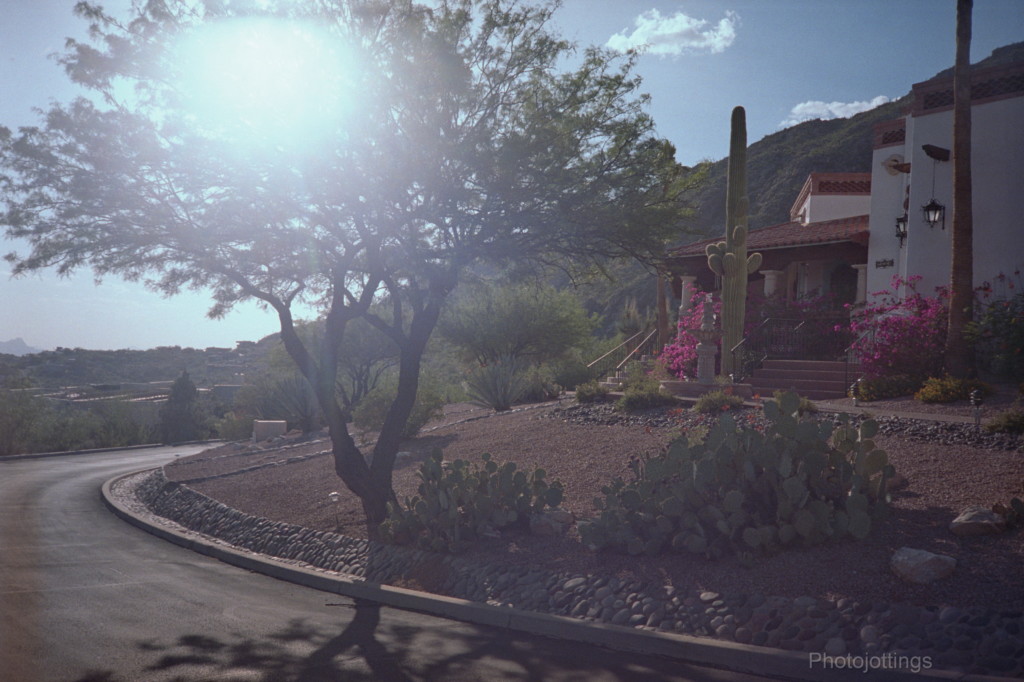
Ghosting control is pretty good, but I see some contrast loss when shooting with the sun inside the frame.
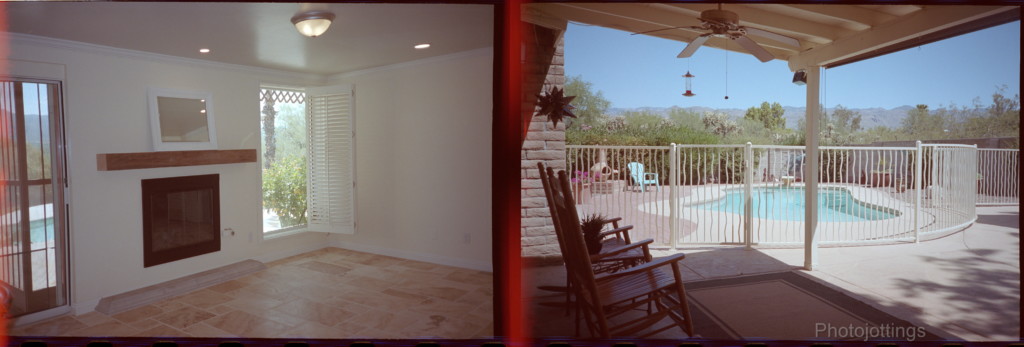
Odd light marks on the film that always appear along the spacing margins for the first half of the roll. I taped over the entire back cover and it still showed up, darn it.
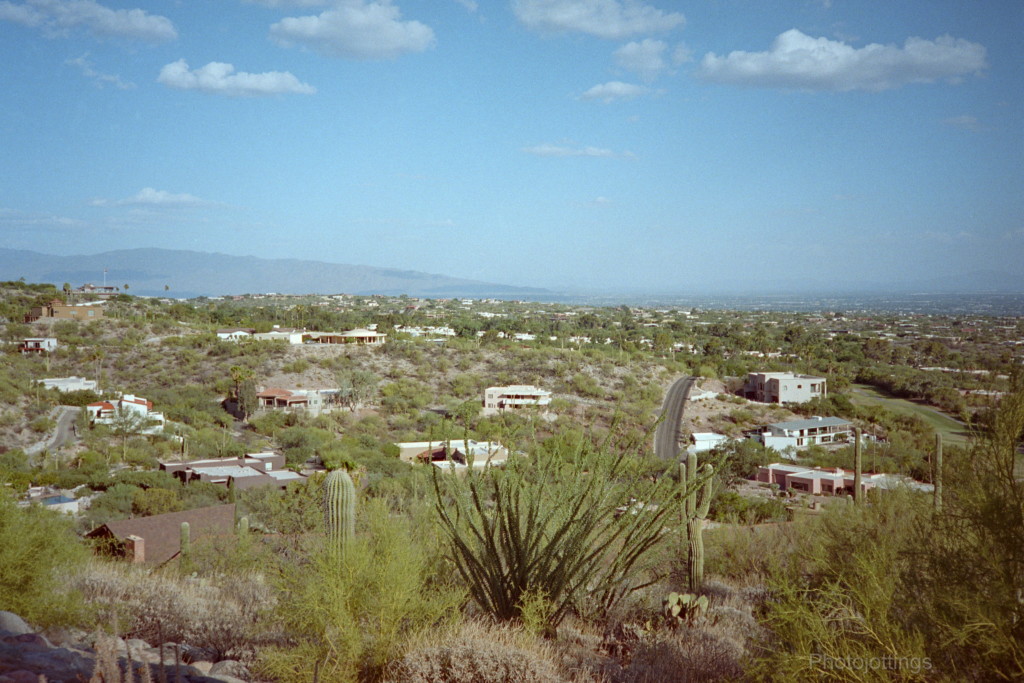
Skyline Valley view.
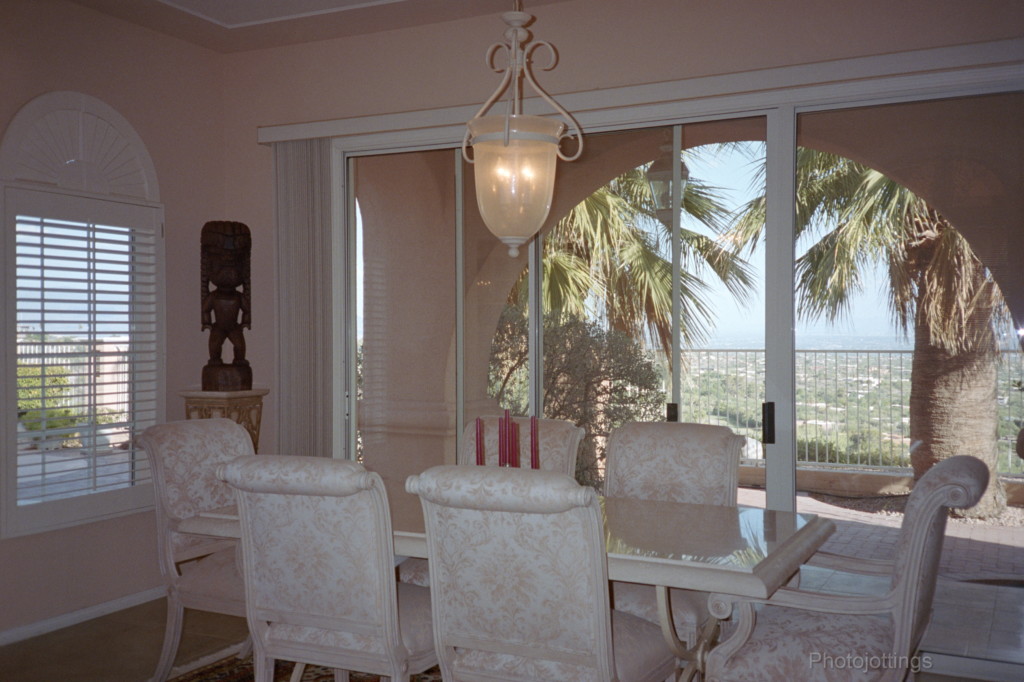
Dining with flash at F/3.2. It focused more towards the outside than the table and chairs.
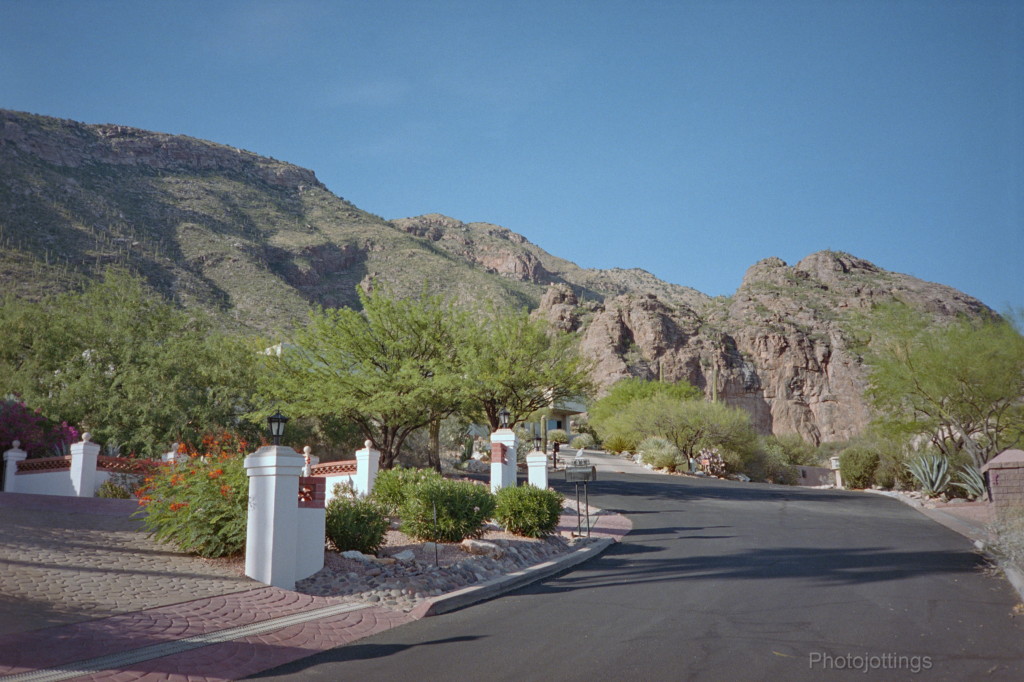
Dead end, or steep climb ahead. Notice blurry extreme sides and corners.
Conclusion.
The Ricoh FF-3D AF Super turned in a very good review. Pluses include the outstanding lens, which is just as sharp over most of the frame as the expensive Nikon 35Ti, but lacking the excellence focusing, noticeable mostly at short distances. I also like the excellent light metering, simple on-off flash switch, and easily adjustable ISO dial, and as stated above, it doubles as an exposure compensation dial. With that said, the Ricoh FF-3D AF Super is a point and shoot fully automatic camera, so you have to live with the choices it makes, and not worry about apertures and shutter settings.
There isn’t much to complain about aside from the stupid audio signal instead of automatically rewinding the film when the roll is done, and the hit and miss focusing up close. One thing that’s a little surprising is the paltry eight total focusing zones; I guess that’s fine for longer distances, but not for closer subjects.
I really like the Ricoh FF-3D, but I’ll probably won’t be using it much more. The Nikon 35Ti is smaller, lighter, faster and has a slightly better lens, (although much more expensive), so shooting the Ricoh is more for a 1980s nostalgia trip than a practical 35mm camera for today.
Anyhow, a thumb and a half up for this 1984 silver metallic beauty, check them out here.
That’s it for this review, thanks for visiting!
Please consider buying your goodies through my links, doing so helps support the site, thanks!